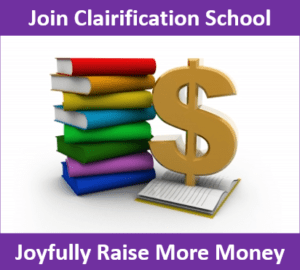
Human beings yearn for positive feedback
Recognition. Appreciation. Acknowledgment. Gratitude.
Psychologists, sociologists, philosophers, economists and historians have often studied and documented this phenomenon. It’s part of our quest for meaning and connection.
- Darwin talked about “survival of the most loving.” Communities who took care of each other were the “fit” ones. Similarly, those members most sensitive to group feedback survived. It’s difficult to make it alone.
- Maslow talked about the need for love, community, esteem and self-actualized identification with a higher purpose.
- Economist Daniel Pink’s research on motivation in “Drive” reveals that the happiest people are those who’ve found a sense of purpose beyond their own self-interest.
- Psychologist Matthew Lieberman, in “Social, Why Our Brains Are Wired to Connect,” writes about how MRI scans reflect that our brains are hard-wired to respond to positive recognition from others.
I like the way the team at Turnkey (specialists in Peer-to-Peer (P2P) Fundraising) expresses it:
The impulse to be recognized is rooted in our DNA, a baked-in manifestation of our evolutionary need to socialize in order to survive.
So what does this mean for fundraisers?
We All Crave a Pat on the Back
When your donor makes a gift, they need to know you appreciated it. This is not greedy or selfish behavior. It’s human behavior.
When you don’t thank donors promptly, personally and powerfully– demonstrating the impact of their philanthropy and reflecting back to them how they’ve made a meaningful difference – you deny them the feedback they need to feel satisfaction.
There have been many articles written on the importance of delivering donor love (it’s one of my soapbox issues) to sustain loyalty and boost the lifetime value of your donors. We seek happiness, and look to others to deliver it to us.
This is why I counsel nonprofits to build a “happiness delivery plan” – a donor-centered take on “stewardship,” which can otherwise too often take on a transactional, checklist quality of things done to the donor rather than with them or for them.
ACTION TIP: Develop and sustain an ongoing donor relationship-building (aka gratitude) program. Ask yourself regularly: “What can we do today, this week, this month to give our donors a heartfelt pat on the back?” “How can we show our donor they are integral to our mission and community?”
Extrinsic Rewards Never Hurt Anyone
Our society tends to thumb our noses at folks who seek extrinsic rewards. We get judgmental and think folks should just “do the right thing” and feel good about it.
Sadly, giving is too seldom its own reward. Donors need you to complete the value-for-value exchange that is at the core of all fundraising.
- Your donor gives your organization something of value (treasure).
- Giving happiness is the value you offer in return.
This is an active, intentional practice.
It’s not sitting back and assuming the donor will find some satisfaction on their own (e.g., fulfillment of a moral or religious obligation; assuagement of guilt; paying someone back, etc.). It’s you, doing your job, helping your donors along the pathway to passionate philanthropy.
ACTION TIP: Develop and sustain an ongoing donor-centered content marketing program. Ask yourself regularly: “What can we offer our donors that’s of value to them? How can we be useful? What ‘gifts,’ tangible or intangible, do we have to offer?
Findings Reveal Recognition Can Drive Fundraising
Turnkey has released results of a benchmark study of P2P fundraiser recognition: Volunteer Fundraiser Motivation [Free e-book download]. The findings reflect in-depth research of 93 programs from different nonprofits in the US over a three-year period. It’s a fascinating study, with plenty of food for thought and a road map for nonprofits savvy enough to leverage the power of their donors as influencers and advocates.
Turnkey found that P2P fundraisers fall into two groups: (1) ‘recognition seekers’ who accept the rewards offered at various levels of engagement, and (2) ‘recognition decliners.’
One of the key findings was this:
In 98.39% of the programs, recognition seekers raised more, on average, than recognition decliners.
The study also found that recognition seekers were more likely to return and fundraise; when they did, they’d fundraise at a higher level.
I think of it this way: The recognition seekers are the best worker bees. If your nonprofit wants the best worker bees (i.e., the most successful P2P fundraisers), you need to offer the honey (i.e., recognition, appreciation, positive feedback and gratitude).
ACTION TIP: Develop and offer a range of recognition opportunities to enhance donor satisfaction with their participation in your cause. Ask yourself: “What would be meaningful to donors involved in this particular activity?” “What would they be comfortable with, where they wouldn’t end up feeling the sole reason they participated was to get the reward?”
How Recognition Gains Power and Momentum
The Turnkey findings show that simply offering recognition will not give you the biggest bang for your buck. You must do so in a manner that increases the likelihood it will be accepted.
Why? Because when I, your donor, seek recognition — and get it — a little switch clicks in my brain. I feel that recognition is deserved!
This activates my commitment. When I feel my reward is deserved, I continue to seek out that reward. I don’t want to lose it.
A mere offer of recognition is just like checklist stewardship.
It’s the difference between sending a generic transactional receipt following a donation (“Thank you on behalf of the board for you $100 gift”) vs. sending a personal, powerful thank you note that says “Jimmy will go to sleep with a full belly tonight, because you cared”) – reflecting back to me a vision of myself as the hero I want to be.
The former is “done” and checked off your list, but it does very little for your donor. The latter makes your donor feel like a really good person.
Once I, the donor, acknowledge the recognition, gratitude or reward that’s offered, that’s when I self-identify as a good person – and actually believe it’s real.
ACTION TIP: Discourage self-deprecatory behavior by donors. Let them know how including their name in print… being honored… sharing their story, etc., encourages others to follow in their footsteps. Encourage them to embrace their awesomeness, not only for themselves but also to leverage the power of their good deeds!
Leading a Horse to Water
You know the old adage, right?
Don’t accept the notion that it’s beyond your control to persuade your donors to drink in their deserved recognition!
None of that “pride goeth before a fall” stuff. You want your donors to feel pride in their participation with you!
Because all the research shows that drinking in rewards is actually good for us. Gratitude recipients (and givers) reap all sorts of positive personal benefits.
You want to do stuff that’s good for your donors, right?
But… how do you persuade someone, conditioned by society to decline external rewards, to accept recognition?
You do a little dance that shifts your donor’s perception of these rewards from external to internal.
Intrinsic Rewards, Positively Reinforced, Build Loyalty
Intrinsic rewards are those that originate from within a person, rather than those you bestow.
Turnkey points to a body of research around the reinforcement of what is known as self-identification or intrinsic labelling. Much of this comes from our old friend Robert Cialdini, author of Influence, the Psychology of Persuasion (loyal readers of Clairification will know I cite him a lot). Once someone perceives themselves a certain way, they will persist in fortifying this perception (it’s a principle known as “commitment and consistency.”)
When you make me, your donor/fundraiser, feel like an important member of your tribe, I will begin to self-identify this way.
In other words, don’t thank me for fundraising (verb) for your cause; thank me for being a cause evangelist (noun). “I’m a hunger fighter” is a label I can proudly wear. “I fight hunger” simply describes an action I’m willing to take. One defines me; the other doesn’t.
It’s subtle, yet powerful. The difference is between acting (verbs) and being (nouns). Humans identify, existentially, as nouns. They identify as members of a group. “Hunger fighters” hang together. They share similar values.
RESEARCH & TIP: Linguistics research shows people who describe themselves as ‘chocolate lovers’ report significantly greater liking for chocolate than those who say “I eat chocolate a lot.” In a survey about voting conducted at Stanford, those asked “How important is it to you to be a voter in tomorrow’s election?” voted 11% more than those asked “How important is it to you to vote in tomorrow’s election?” Call your donors heroes, friends, evangelists, advocates, and members of your community or club. Create something with which they can affiliate.
Redeemed Recognition Enhances Allegiance
Recognition redemption (whether it be a token gift offered through a P2P campaign, agreement to be honored at your Gala, or acceding to have one’s name published in a Donor Honor Roll) is a marker of how effective you were in reinforcing your donor’s intrinsic label: I am a “proud donor”… “awesome fundraiser”… “community leader.”
Once you’ve offered a reward – even something as simple as sending your donor a gold sticker in an envelope – your goal is to continue to reinforce what your donor has earned. To make it part and parcel of who they perceive themselves to be:
- I’m a gold sticker winner.
- I’m a top fundraiser.
- I’m a legacy society member.
- I’m a board leader.
- I’m a philanthropy hero.
ACTION TIP: Build into your donor relationship-building plan as many opportunities as possible to reinforce intrinsic labeling. Consistently hold a mirror up to your donor so they see who they want to see. Get them to the point where they begin to self-identify as a member of your tribe.
When your donor genuinely perceives themself as your hero, because you’ve told them and shown them repeatedly throughout the course of the year, you’re in the money!
Enroll in Clairification School so you don’t miss an article!
 I hope you’ll consider Clairification your online, year-round fundraising school. My goal is to help you work smarter, not harder. I try to bring fresh ideas, and combine them with tried-and-true fundraising basics. I’ll tell you not just what to do, but why. You’ll get tons of useful content — pretty much for peanuts — because I’m dedicated to giving you the knowledge you need to succeed. To your success! ENROLL HERE.
I hope you’ll consider Clairification your online, year-round fundraising school. My goal is to help you work smarter, not harder. I try to bring fresh ideas, and combine them with tried-and-true fundraising basics. I’ll tell you not just what to do, but why. You’ll get tons of useful content — pretty much for peanuts — because I’m dedicated to giving you the knowledge you need to succeed. To your success! ENROLL HERE.






I keep up with a number of blogs to keep me SHARP on my own efforts. I raise funds for our family to work with an organization, and they process the money for us, and our partners/donors get a receipt for tax deductions. But I don’t actually fundraise for an organization. — But keeping up with current trends and information helps tremendously. Thank you!